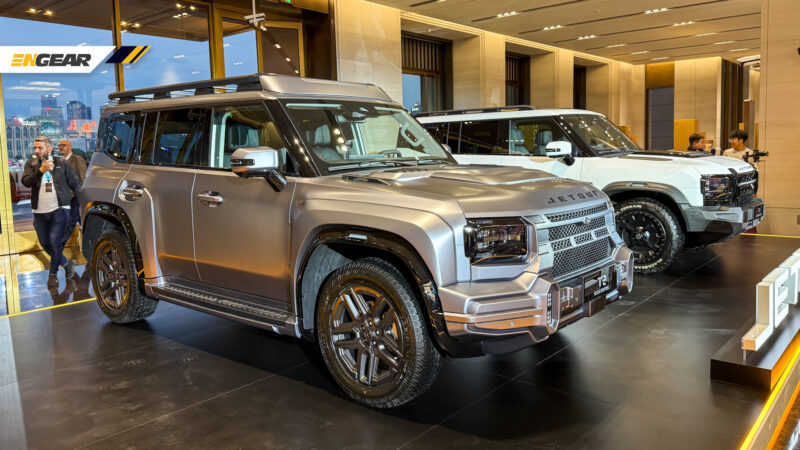The Jetour T2 is a mid-size SUV that features a unibody construction and offers characteristics suitable for off-road driving.
In its standard version, the Jetour T2 boasts a boxy SUV design reminiscent of the popular Land Rover Defender.
This design element is accentuated by a variety of accessories available for customization, based on the presence of several body kit variants showcased at Auto Shanghai 2025.
Near the Hilton Shanghai Hongqiao hotel, where the media are staying, Jetour displayed the T2 Stargazer version, complete with accessories such as:
- A front bumper with a protective bar
- A more aggressive grille
- Distinctive alloy wheels
- Side steps
- A taller engine hood
- A roof rack
- Wider front and rear fenders
- A foldable ladder on the left side
- An external storage box on the right side
- An external storage compartment on the tailgate door
- Protective metal for the rear light housing
At the Jetour International Business Annual Conference dinner, they presented two additional accessory concepts known as Stargazer Air and Nexus Sentinel.
Unlike the Stargazer, the Stargazer Air package is more streamlined, lacking features such as a roof rack, side storage box, and foldable ladder.
The Nexus Sentinel accessory package features a futuristic and modern design, with wider front and rear fenders, an aerodynamic roof rack, and a cyberpunk-style fuel tank cover.
For your information, Jetour has previously confirmed plans to launch the Jetour T2 SUV model in the Malaysian market soon.
Jetour T2 Stargazer
Jetour T2 Stargazer Air
Jetour T2 Nexus Sentinel
